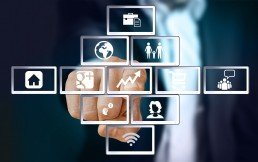...and how does it impact our shared future?
Frankly speaking, the future is a no-nonsense, briefcase-bearing dude with little interest in our emotions. It is an unannounced rise in sea levels. An unexpected jump at the stock market, or an unprecedented nosedive in exchange rates.
However you see it, it really doesn’t care about our perception of it. It just is. Sometimes it smiles, sometimes it even cracks a heartfelt laughter. Other times, it just moves and cares little for us. It does what it wants. And there’s nothing anybody can do about it.
Certainly you’ve heard about the Internet of Things (IOT). It is an interconnectivity of devices, vehicles, gadgets, appliances (home or office) enabling interaction, connection, collection and exchange of data. Just think about how interconnected humans are in the world (billions of us), how we can speak, exchange information and generally interact by reason of a central connectivity hub, irrespective of location. Now think about this phenomenon with respect to things and it suddenly makes more sense.
By 2020, more than 30 billion objects in the world will be connected through the IOT. As long as an object has a computerized system (whether in form of a large board, or a microchip) which gives it its individuality, it can operate on the infrastructure of the IOT. Imagine a typical morning when your phone’s wake-up alarm automatically communicates with the coffee-maker and turns on the bathroom’s heater. Imagine pressing a button which starts your car, opens the gate while you drive out and locks after you leave. Imagine driverless cars communicating with each other and stopping meters short of each other to prevent crashes because of anti-collision censors installed within them. Imagine returning home at night to find your refrigerator’s made orders to restock itself because it was running low on milk, juice and sardines.

The possibilities are endless.
The IoT ushers in a new world that only existed in Sci-fi movies decades ago, and completely changes the game. A hundred inferences from this.
But it also introduces what may be termed the Internet of Law (IoL). For obvious reasons. Billions of connected devices means billions of things could go wrong. Think about data privacy breaches, intellectual property matters, employer/employee relations, and the broad, global impact on law and order. Where exactly do we draw the line on which law applies?
Looking on the bright side. The IoT/IoL provides a possibility unlike anything we have ever seen. It provides a platform for the integration of systems with law and order. It assures a smooth synchronization of gadgets in autonomous systems with measures of law enforcement.
A few examples:
1. Car camera systems can be synced with CCTVs, mobile phone data to determine liability for traffic offences; or cars can be programmed to head straight to law enforcement “hot zones” after a robbery.
2. Integration of a breath-detection system into a car ignition switch. This can automatically be programmed to disable a vehicle if the driver’s alcohol level exceeds the legal limit.
3. Imagine using the GPS data on mobile phones to establish a driver’s speed at the time of an accident to determine liability.
These are interesting times.
And an inevitable future requires meticulous planning to meet it squarely.
It’s a long way to go, but certainly worth every step.
Gbolahan Olayemi
In 2016, I caught the Legal Tech Innovation bug, and I've not remained the same since. When I'm not pursuing dreams, I'm writing, researching, making music, or designing brands.